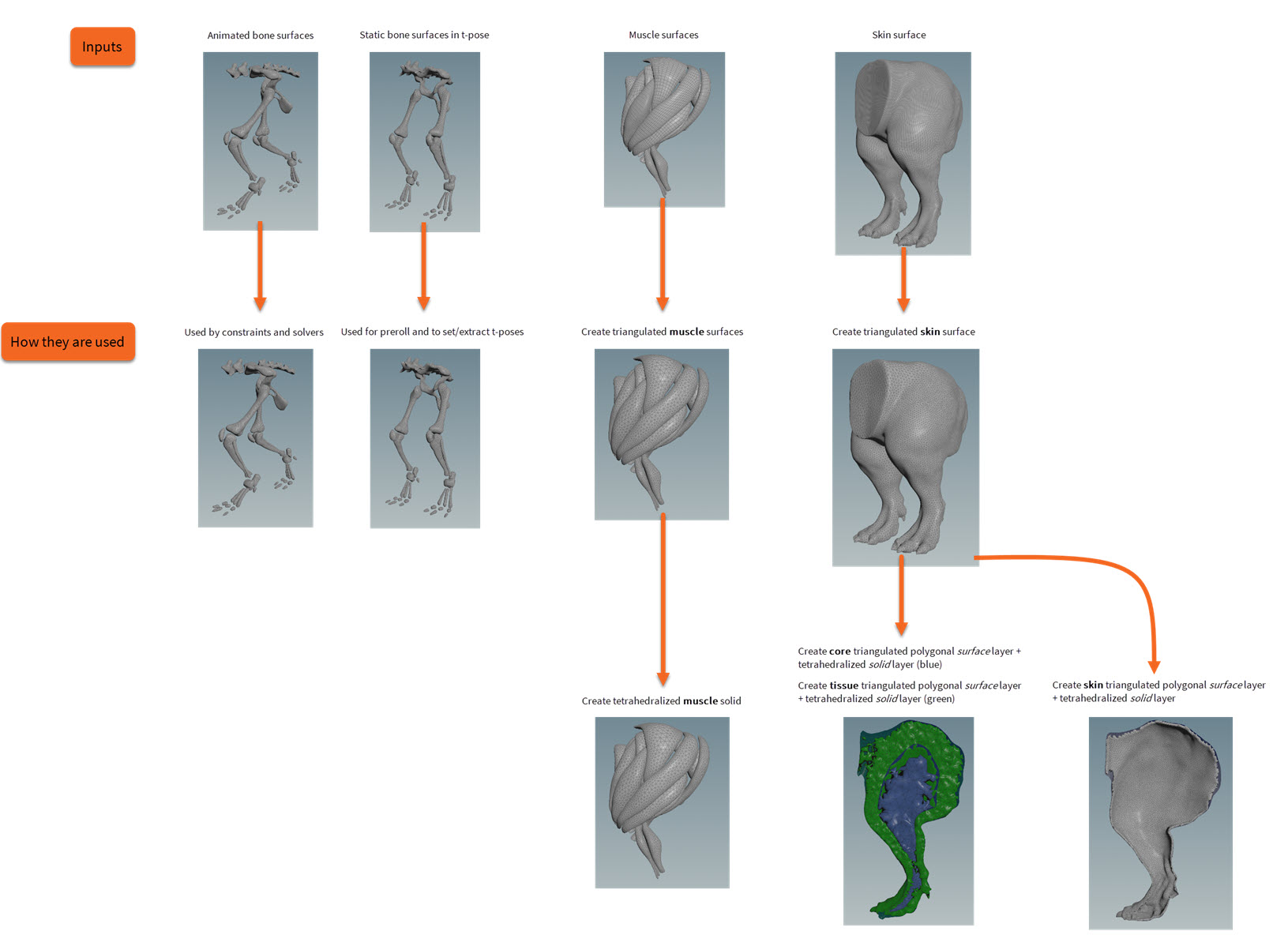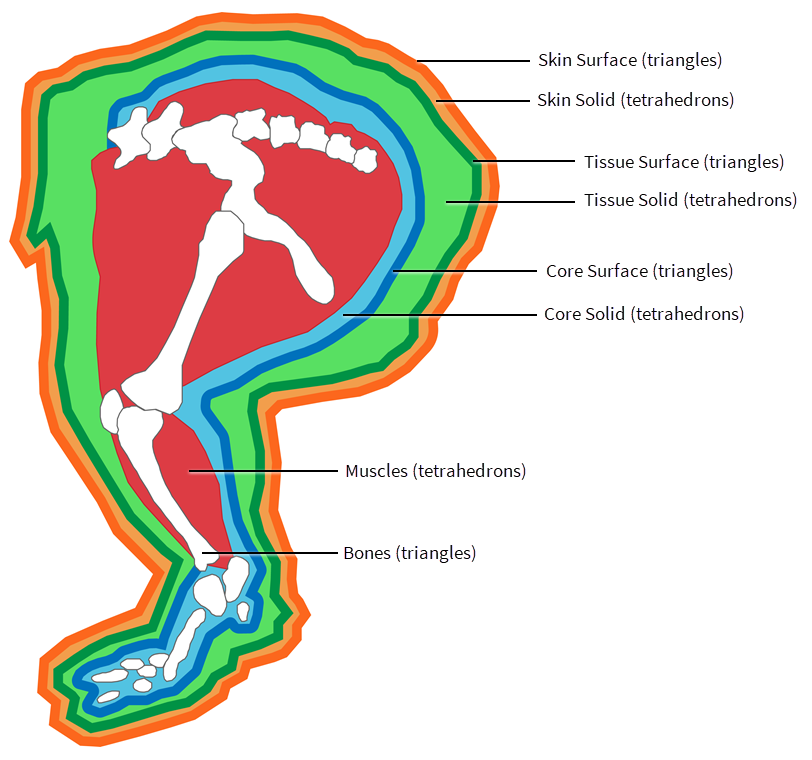| On this page |

Pass requirements ¶
Muscle pass
-
The
Muscle Solidify SOP node requires:
-
Manifold non-intersecting polygonal muscle surfaces.
-
-
The
Muscle Solver Vellum SOP node requires:
-
Solid muscles configured with physical property attributes and constraint attributes.
-
Animated bone surface geometry.
-
Tissue pass
-
The
Tissue Solidify SOP node requires:
-
Skin surface.
-
Muscle simulation geometry cache.
-
Animated bone surface geometry.
-
(Optional) Core surface.
-
(Optional) Core falloff polylines.
-
-
The
Tissue Solver Vellum SOP node requires:
-
Solid tissue configured with physical property attributes and constraint attributes.
-
Animated surfaces representing underlying muscle and bone animation.
-
Skin pass
-
The
Skin Solidify SOP node requires:
-
Skin surface.
-
-
The
Skin Solver Vellum SOP node requires:
-
Solid skin configured with physical property attributes and constraint attributes.
-
Animated surfaces representing underlying tissue animation.
-
Pass layers ¶
Even though each simulation pass operates on solid softbody dynamic objects (objects comprised of tetrahedrons), fused polygonal surfaces also play a role. For example, the Vellum Solver requires a polygonal surface as an attachment target for sliding constraints to have an effect. This is why each geometry layer includes both tetrahedrons and a polygonal surface enclosure.
The following Muscles & Tissue solidification nodes create the required primitive types:

Muscle pass
Muscles are generated by tetrahedralizing input muscle polygonal surfaces, creating one distinct muscle per connected piece. In the process of creating muscles, each connected piece is given an identifier attribute stored as muscle_id. If overlapping muscle surfaces share a common muscle_id value, then they are tetrahedralized as a merged entity. If overlapping muscle surfaces have distinct muscle_id values, then they are tetrahedralized separately and remain as overlapping objects. Polygonal surfaces for muscles are not created in the solidification step. Instead, the surfaces are created just-in-time within the
Muscle Solver Vellum SOP node as they are only required for the Vellum sliding constraint.
Tissue pass
Tissue is generated using a layering approach. Perhaps the most complex object in the Muscle & Tissue system, the tissue solid is divided into two layers. The innermost tissue layer is referred to as the core, and the layer surrounding the core is just referred to as the tissue. Polygonal surfaces are created to envelop both the core tetrahedrons and the tissue tetrahedrons. As a result, the tissue pass is comprised of four distinct pieces of geometry: the tissue surface, the tissue solid, the core surface, and the core solid.
The core plays an intermediary role in attaching tissue to muscle; it is firmly attached to the muscles and bones, and it serves as the attachment target for the tissue. This means the tissue is attached to the muscles and bones via the Core. The core also has the ability to respond to the scaling force by imparting an inward pull on tissue geometry in order to force it (by applying negative pressure) towards the muscles and bones. This shrinkage/volume reduction during the tissue simulation pulls the tissue inward to create the muscle definition for your character.
The function of the tissue is to envelop the muscle and bone animation and show their underlying movements up to its tissue surface. If you vary the the attachment constraints of the tissue to the core, muscles, and bones, and vary the phsyical thickness and material properties of the tissue solid, you can achieve a mix of tightly conforming tissue and loose hanging flab.
Skin pass
The skin is an optional pass after the tissue. The skin layer is built with two structures like Tissue: an interior tetrahedral mesh (skin solid) and an exterior triangulated surface (skin surface).The solid component of the skin (skin solid) can relay physical properties like shape stiffness and volume preservation, while the polygonal surface (skin surface) can contribute stretch resistance to produce desirable wrinkling effects.
If you build the skin with this added thickness, buckling, folding, and dynamic effects can behave more like a fatty epidermal layer and less like a layer of cloth. The skin layer is constrained to the tissue sufrace with a variable amount of sliding. If you stiffen and weaken the skin-to-tissue sliding attachment, the skin layer can reveal wrinkles and folds.
| See also |